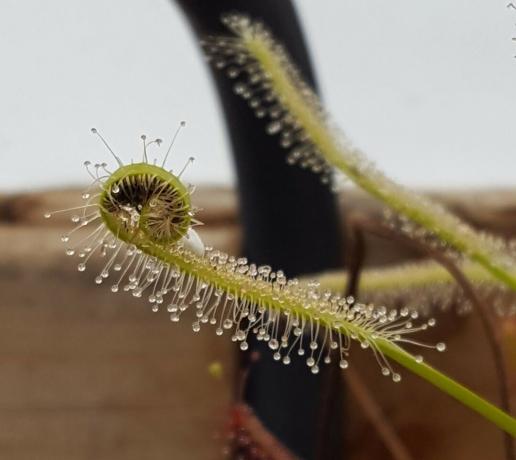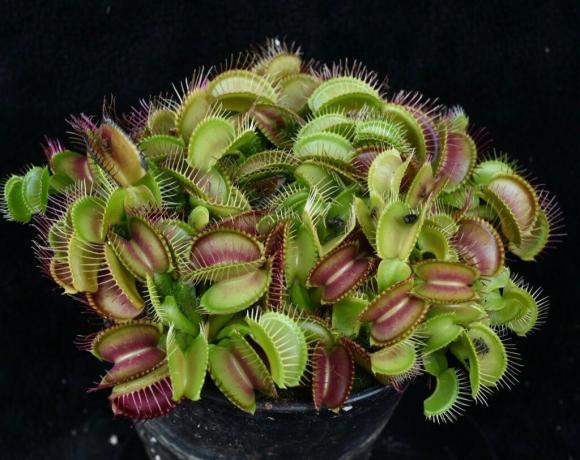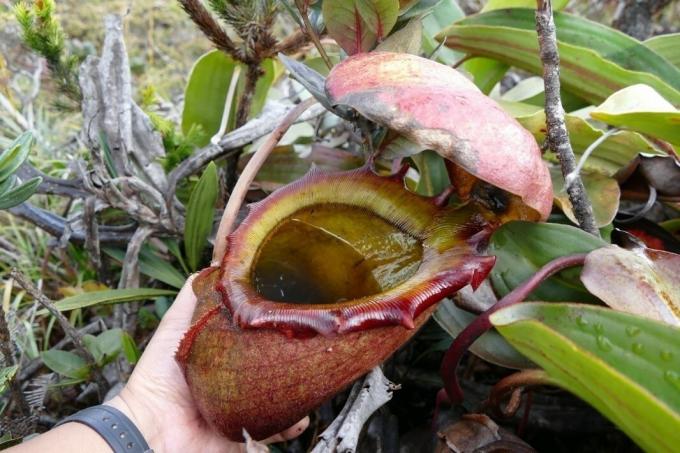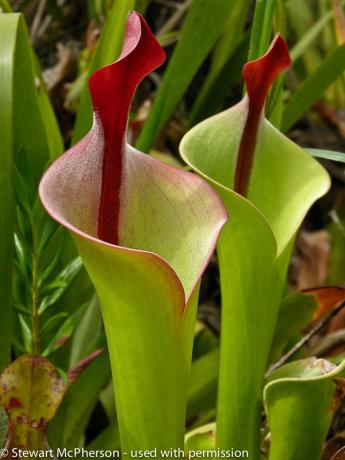At carnivorous plantss also called insectivorous plants have the great ability to attract different types of animals to their ambush, like insects, frogs, birds, each of them have a different kind of attack to attract and attack their prey. Are we going to meet any of them?
Some movies have portrayed carnivorous plants in a very frightening and even agonizing way, arousing the interest and curiosity of thousands of people because of their shapes that are quite exotic and tricky, despite having frightening sizes and shapes, are important for the balance of our ecosystem.
Carnivorous plants produce their own food, that is, they can be considered autotrophic organisms, carry out photosynthesis, and are the main reason for capturing their prey is to guarantee nutrients for their survival, as they grow in soils with little nutrient structure for the survival of the same.
Let's get to know some of them?
These carnivorous plants are mainly present in southern Africa, are part of the Droseraceae family, have an unusually shaped style, like that of a native rosette. Because their size and shape are small in stature it is not so easy to find them by looking so quickly, the leaves of these plants can reach 3 cm and 0.5 in width, the tentacles are thin and have a very sticky substance, and visually they are very beautiful. see yourself. In the prey attack part, the leaves contribute to the insects feeling attracted and end up posing on them, with this the Drosera does not waste time, when the insect contact with its leaves can no longer escape, after capture the plant quickly wraps the insect in its tentacles, calmly tasting its snack.

This image portrays well the moment of attack, they are plants that are easy to grow due to the fact that they have seeds that are produced daily throughout their life.
Visually it is considered one of the most amazing carnivorous plants on the entire planet earth, only its size is small compared to other species and can measure less than 15 cm, this carnivore is extremely agile, smart and mainly efficient in its attack against prey, just to have an idea, its movements happen in less of 0.3 seconds, that is, it is very fast, making it easier to capture your food, in addition to insects, it has the ability to eat frogs, lizards, spiders, and it is practically impossible to escape its attack, as they have 15 to 20 teeth in their jaws on the edges, the digestion of this plant lasts for 10 days, that's right, process long isn't it? And they are part of the few plants that can perform movements.

Yes, it has a pretty weird shape, isn't it? They are also part of the Droseraceae family, and can be found mainly in America do north, in tropical mediterranean climates, temperate, finally, it is a very adaptive plant to environments.
It is found in tropical areas, mainly on the Asian continent, it is a climbing species, and they accommodate between the trees, with this accommodation attract insects unaware of its presence that rest peacefully on the mouth of the plant. Measures around 35 cm, your attack is through digestive substances located at the bottom of the Jar, Jarro? Yes, these carnivorous plants in appearance are shaped like a jar. Amazing isn't it?

These carnivorous plants are among the largest species known worldwide, reaching up to 6 meters in height. in malaysia, these plants, similarly to nursery, have a structure that looks like small jars on the tips of the leaves, in the opening of this plant it is found a kind of lid that helps in the trap, inside the opening we can find a kind of liquid that attracts several prey to the trap. ready.

Source: Obscure Atlas
This image portrays well the entire structure of the carnivorous plant, especially the slippery sides that make it impossible for the prey to have any chance. They contain more than 200 ml of water in their structure. Nature is amazing!
This type of plant is very old, its discovery was around 1841, in California, it releases nectar that attracts insects to its end, because in its structure there is a kind of water that drowns the prey, these prey pass through a tunnel style slippery and is thrown into a waterhole full of bacteria, usually these animals are transformed into important nutrients for their survival.

It is a plant that is not very suitable to be cultivated and difficult to access.
In the Brazilian territory, we can mention two:
Utricularia is part of the lentibulariaceae family, its natural habitat is aquatic or even semi aquatic, depending on the species they are classified, as some can grow on trees, soils, and even on stones. In the aquatic environment the traps are small vesicles, these vesicles are a kind of a bag, on the outside there is a kind of hairs, the prey that touches these hairs is thrown in quite quickly, thus initiating a long process of digestion.

These types of carnivorous plants are rare and have been recently discovered, they are present in Venezuela, Guyana and the border with Brazil, are usually located at more than 2000 m of altitude, in the mountains tepuis. Its "attack" occurs because of its shape and beauty, because in its structure there are striking colors that draw the attention of the prey, not only the colors are attracted by the exhaled smell. of nectar, digestion, unlike other plants, does not happen by digestive enzymes, as these plants do not have these enzymes, digestion is carried out by bacteria.

Therefore, it is very nice to pass and study this information with the children, taking into account the search for curiosity and knowledge about these very special plants, taking away the myth that they are dangerous and frightening. How about cultivating them there in your house?
Subscribe to our email list and receive interesting information and updates in your email inbox
Thanks for signing up.
